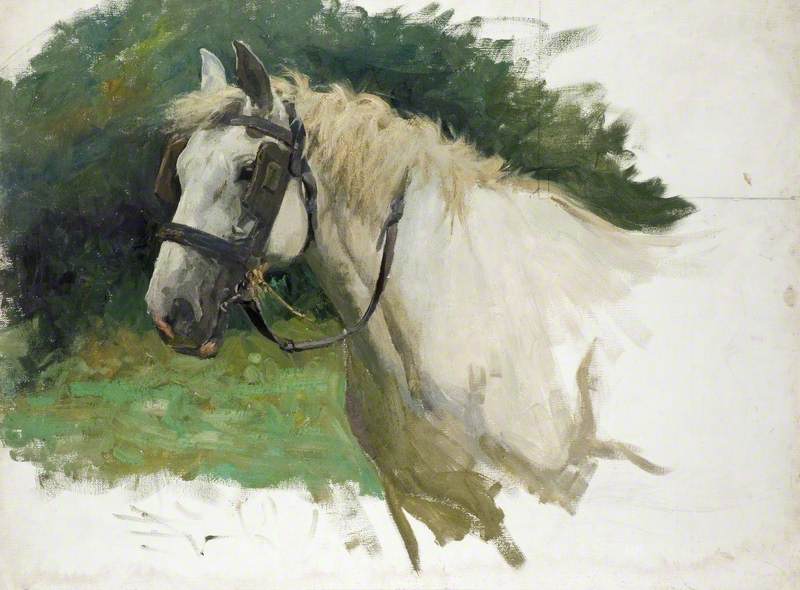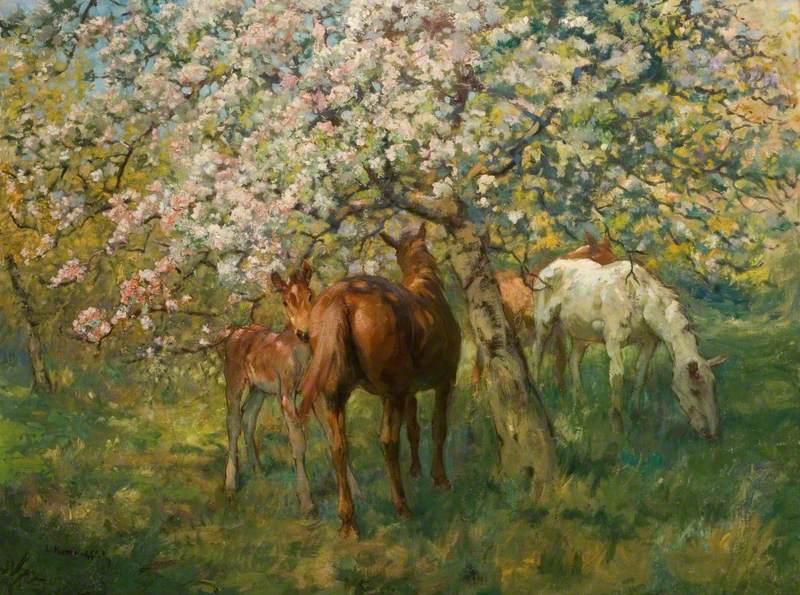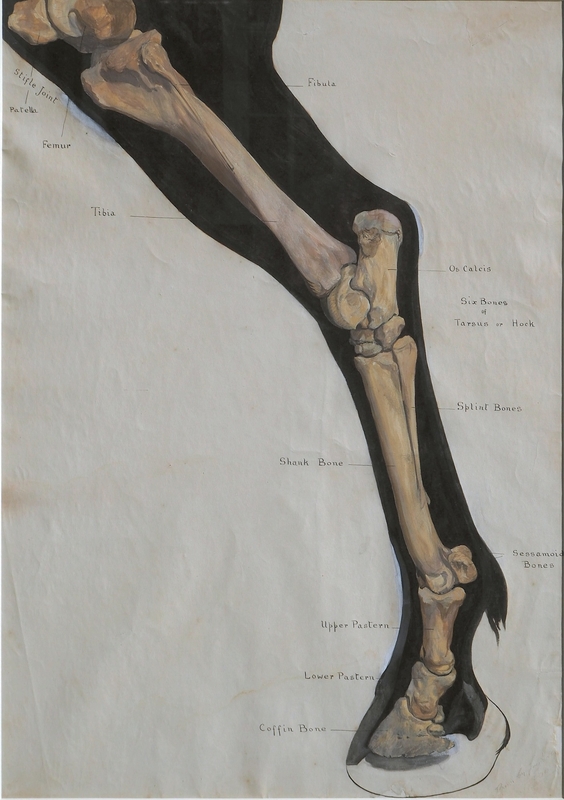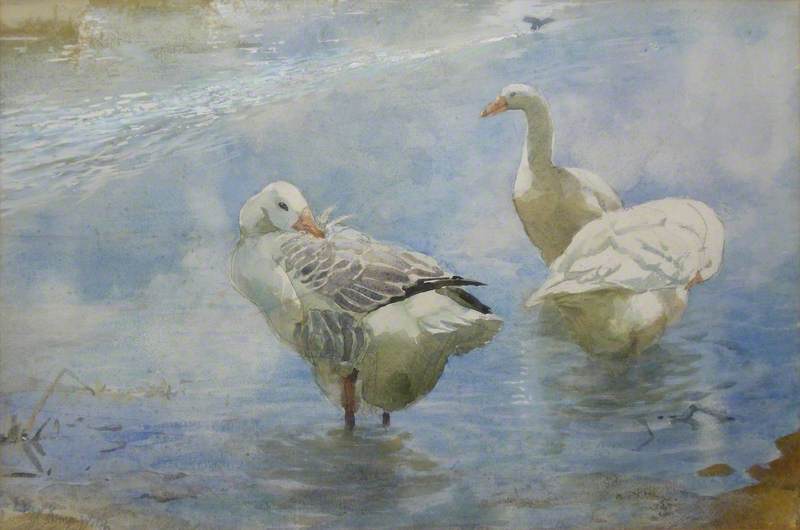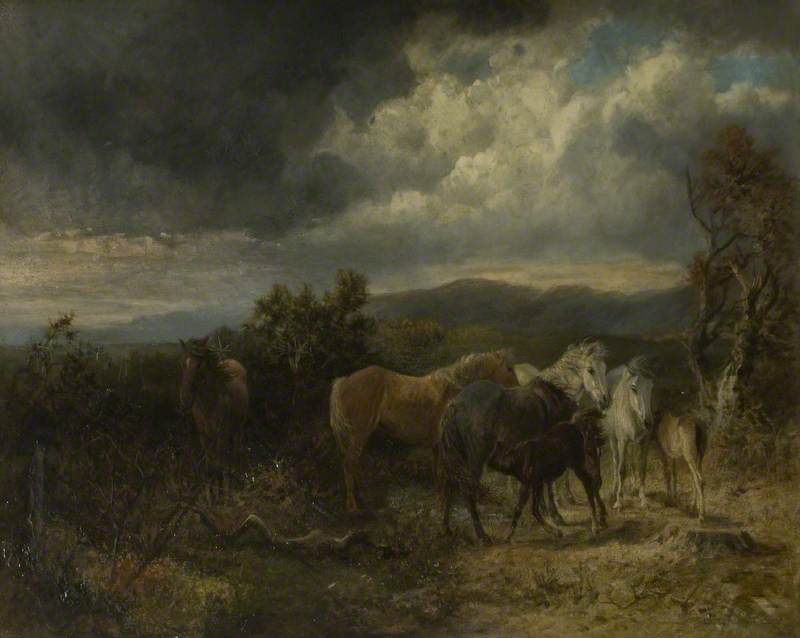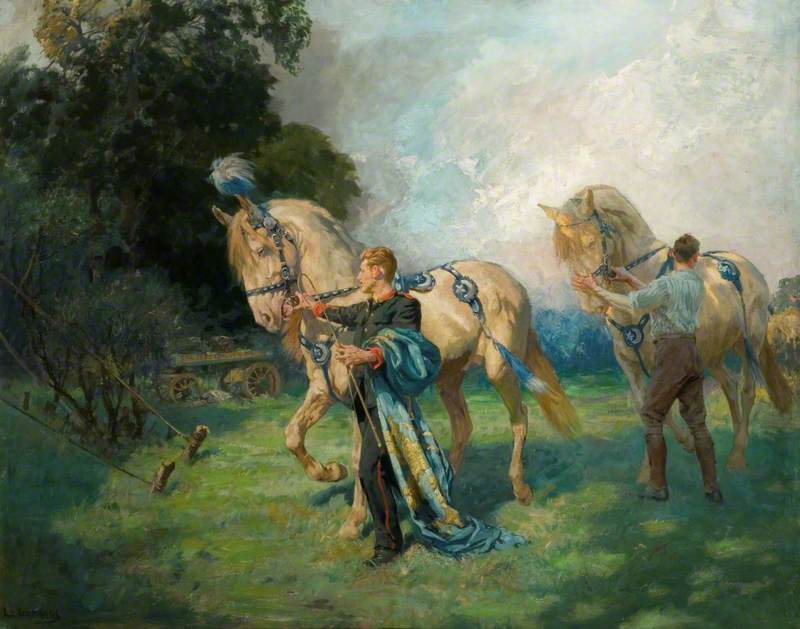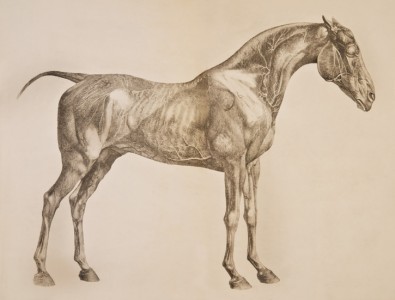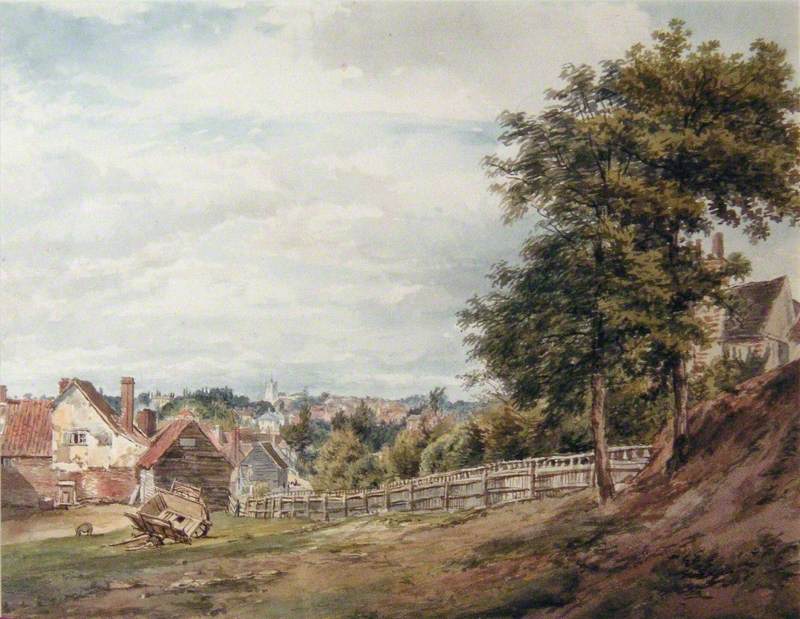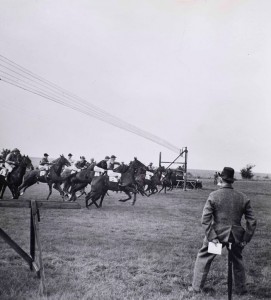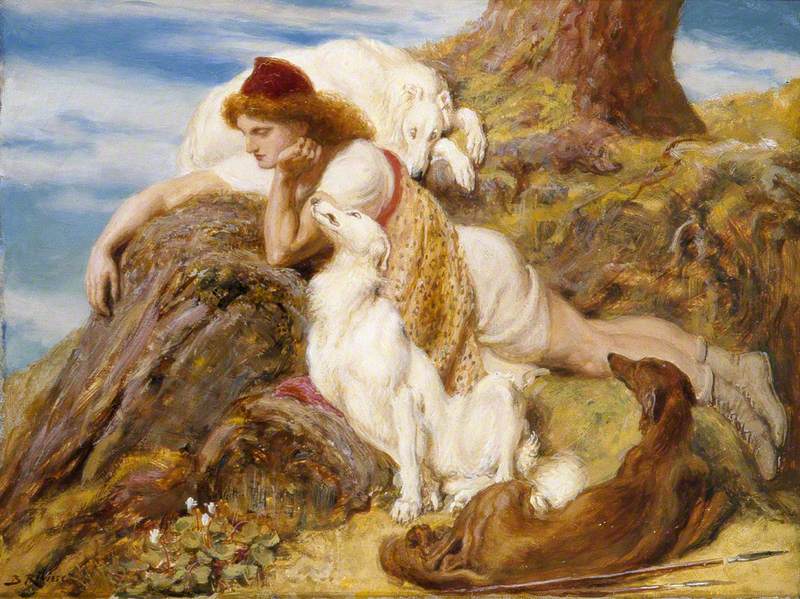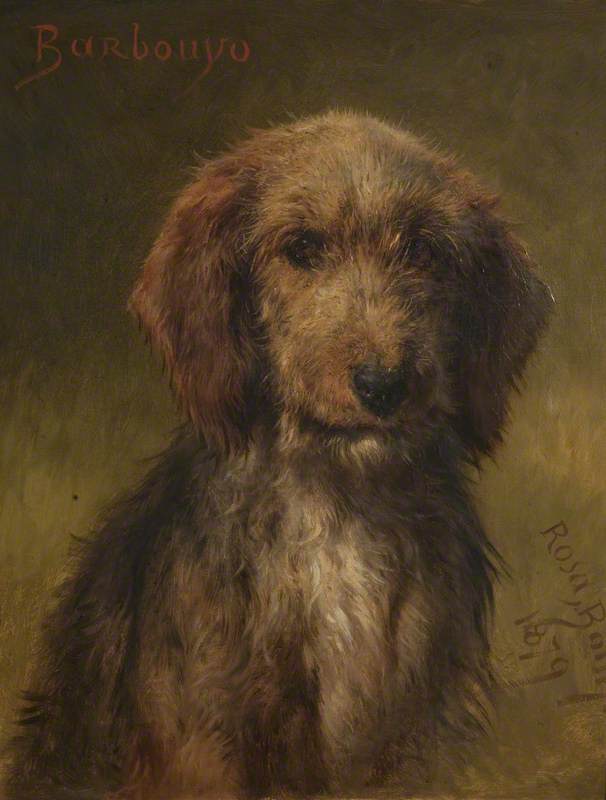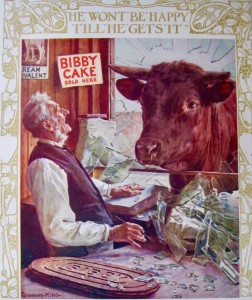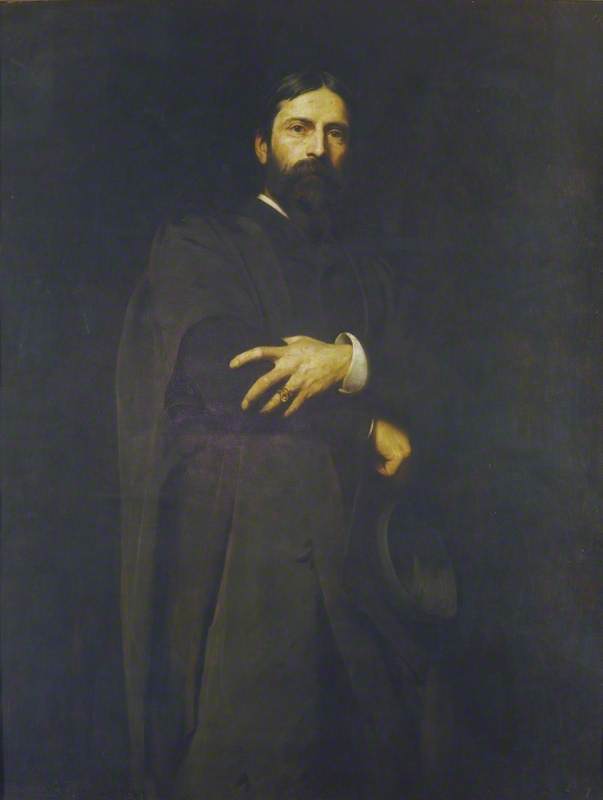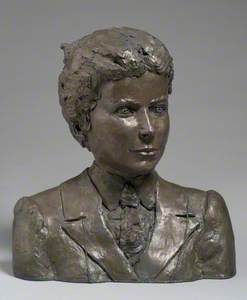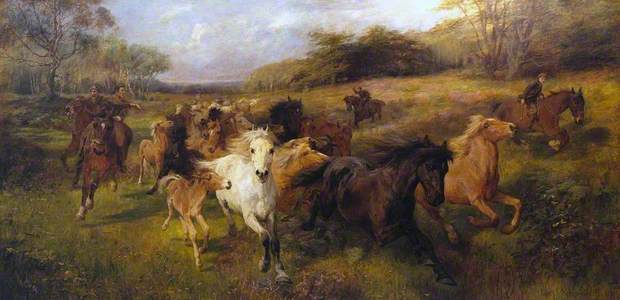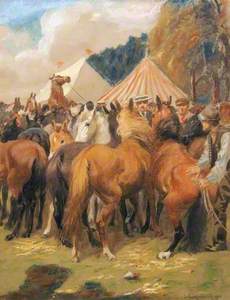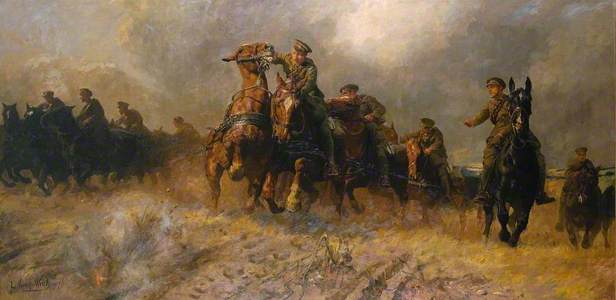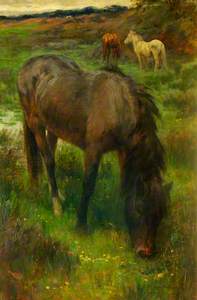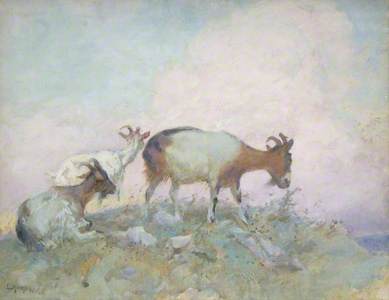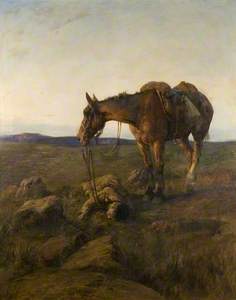From the late 1890s until the 1930s Lucy Kemp-Welch was one of the best-known female artists in Britain. Though her reputation declined in the decades after the Second World War, she is now widely regarded as one of Britain's most important equestrian artists. Her particular interest was the working horse. It was a subject she captured with style and verve, and as she later remarked, 'Horses are, to me, the breath of life.'
Born in Bournemouth in 1869, Lucy came from a prosperous Dorset family. With her younger sister Edith she enjoyed a happy childhood, surrounded by animals. Her father, a solicitor and amateur naturalist, took his daughters on walks in the countryside, inspiring a life-long love of nature. Lucy later explained that the New Forest 'has a charm for me which is beyond all telling.'
From a young age, both sisters drew and painted. Opportunities for female artists were improving in the later nineteenth century, and in 1892 Lucy and Edith moved to the village of Bushey, Hertfordshire to study at Sir Hubert von Herkomer's art school. Herkomer encouraged his students to develop their individual style, and always to work closely from nature.
In 1896 Lucy's enormous painting, Colt Hunting in the New Forest, was exhibited at the Royal Academy's Summer Exhibition.
Measuring ten feet wide by five feet high, it was hung prominently 'on the line,' and was immediately acclaimed by critics and the public alike. The painting was purchased by the Chantrey Bequest and given to the Tate. It was one of the first works by a woman in the recently opened gallery's collection.
Following the success of Colt Hunting there were high expectations Lucy might become the first woman to be elected to the Royal Academy since Angelica Kauffmann and Mary Moser in 1768. Although nominated by Herkomer on at least two occasions, to Lucy's disappointment this never happened. In 1902, however, she became one of the first two women to be elected to the Royal Society of British Artists, and each year for many decades she exhibited at the RA's summer exhibition. A number of these works ended up in public collections in the UK and Australia.
In 1915 Kemp-Welch produced a series of illustrations for a new edition of Anna Sewell's well-loved 1877 novel, Black Beauty.
‘Now, Auster do your best’
(illustration for 'Black Beauty') 1915
Lucy Elizabeth Kemp-Welch (1869–1958) 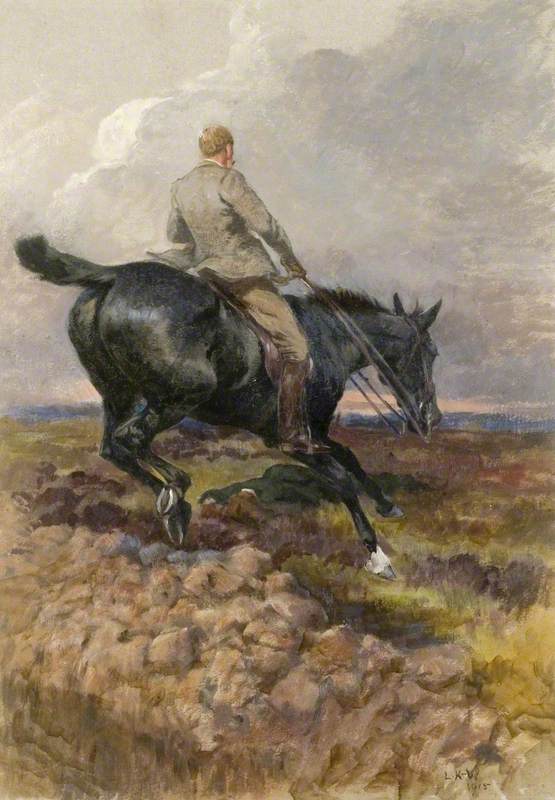
With her enduring love of the working horse, together with her understanding of their distinctive personalities, Lucy's illustrations proved enduringly popular.
Barnet Horse Fair
(illustration from 'Black Beauty', 1915) 1915
Lucy Elizabeth Kemp-Welch (1869–1958) 
The next year Kemp-Welch attempted to go to France to witness the Great War at first hand. Though unsuccessful in these efforts, she was undeterred and painted the Royal Horse Artillery exercising on Salisbury Plain. This led to her major war work, Forward the Guns! (1917).
Well received at the Royal Academy's Summer Exhibition, it was also purchased by the Chantrey Bequest and presented to the Tate Gallery – a rare double honour.
Following this success, Lucy became one of a handful of female artists to undertake an official war commission for the Imperial War Museum. Sent to paint the Ladies Army Remount Depot at Russley Park in Wiltshire she produced another imaginatively conceived and powerfully executed work, The Straw Ride.
The Straw Ride: Russley Park Remount Depot, Wiltshire
1919–1920
Lucy Elizabeth Kemp-Welch (1869–1958) 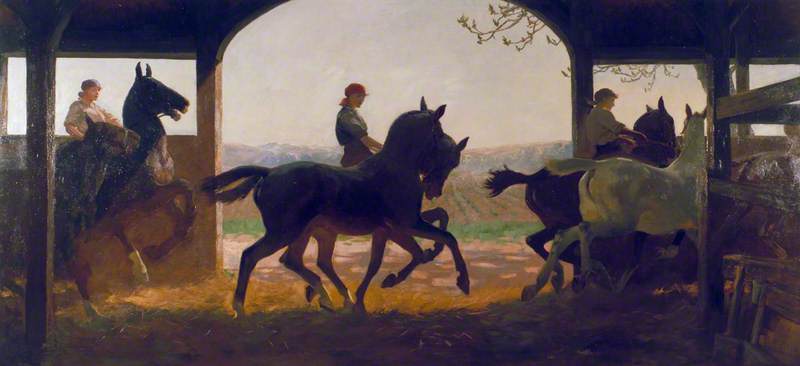
After the war, Kemp-Welch turned her artistic attention to the circus. She would call her long summers spent following Sanger's Circus around England 'the happiest adventure' of the whole year. Everything about it excited her. 'What colour!,' she wrote. 'What days of crowded life! What deep blue velvet nights!'
It was this exotic, vision of circus life that she captured with such liveliness in her painting Aristocrats (1928).
It is one of Lucy's finest oil paintings of the subject, as the Hanoverian creams (the pride of the Sanger stable) prepare to enter the arena.
It was only advancing age – and the approach of another war – that brought an end to her travels in the late 1930s. By this time, with the advance of Modernism, popular taste in art had changed. Her work increasingly unfashionable, Lucy's fame declined, along with the world of horses in which she had grown up. As her eyesight failed through the 1940s she painted less and less. Lucy died in November 1958, aged 89.
Since the 1970s her reputation has gradually revived through the efforts of the London art dealer, David Messum. In April 2023 a new biography of the artist was published, coinciding with a major exhibition of her work at the Russell-Cotes Art Gallery & Museum in Bournemouth, and at the National Horse Racing Museum in Newmarket.
David Boyd Haycock, writer and curator
The exhibition 'In Her Own Voice: The Art of Lucy Kemp-Welch' runs until 1st October 2023 at the Russell-Cotes Art Gallery & Museum
David Boyd Haycock's definitive biography of Kemp-Welch is available from ACC Art Books

